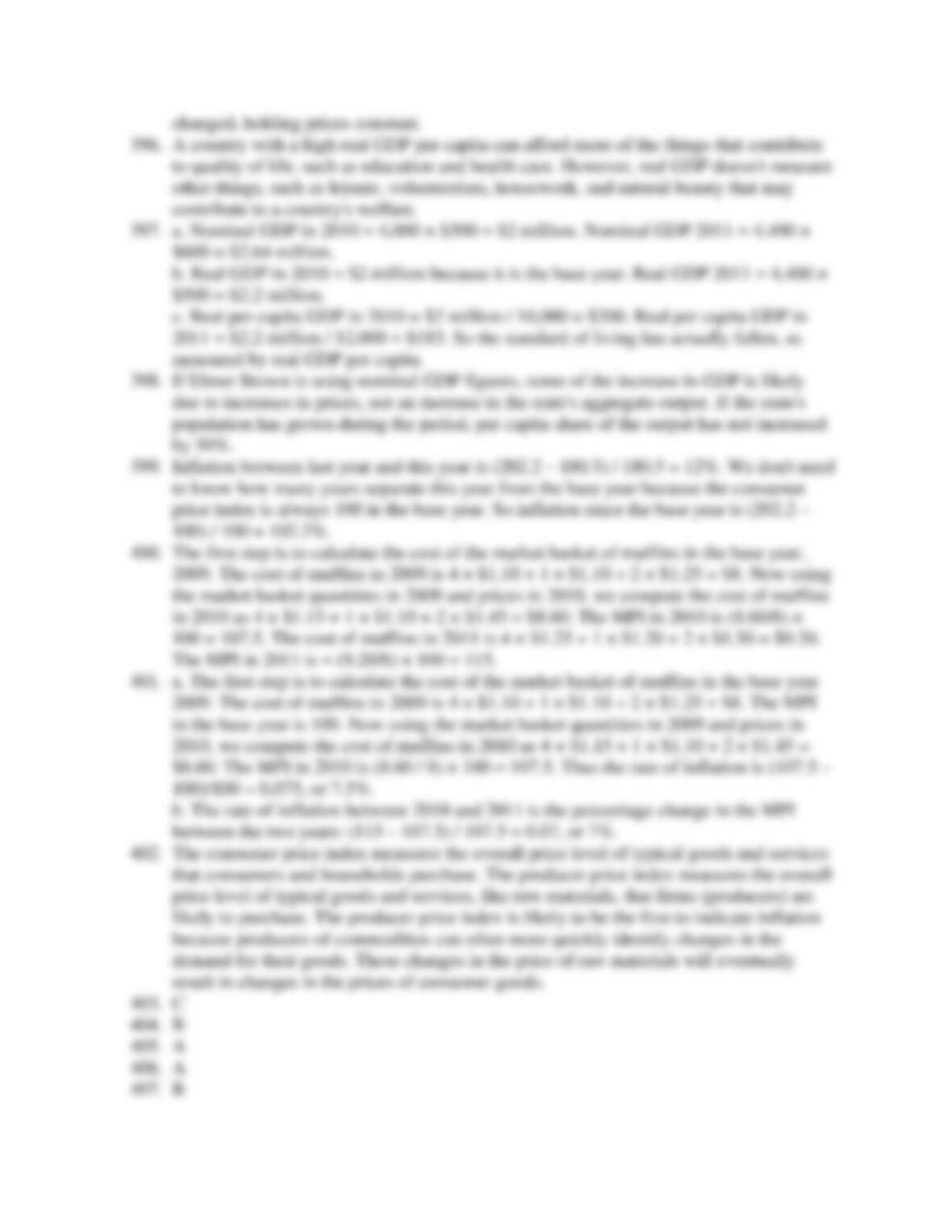(Figure: Circular-Flow Model) Look at the figure Circular-Flow Model. If the
circular-flow model is in equilibrium (the sum of money flowing into each box is equal
to the sum of the money flowing out of it) and there is a decrease in consumer spending,
which of the following is likely to happen?
an increase in the nominal GDP
an increase in the real GDP
an increase in the unemployment rate
an increase in the inflation rate
(Figure: Circular-Flow Model) Look at the figure Circular-Flow Model. If the
circular-flow model is in equilibrium (the sum of money flowing into each box is equal
to the sum of the money flowing out of it) and there is an increase in investment
spending, which of the following is likely to happen?
a decrease in the nominal GDP
an increase in the nominal GDP
an increase in the unemployment rate
a decrease in the inflation rate
(Figure: Circular-Flow Model) Look at the figure Circular-Flow Model. If the
circular-flow model is in equilibrium (the sum of money flowing into each box is equal
to the sum of the money flowing out of it) and there is a decrease in investment
spending, which of the following is likely to happen?
an increase in the nominal GDP
an increase in the real GDP
an increase in the unemployment rate
an increase in the inflation rate
(Figure: Circular-Flow Model) Look at the figure Circular-Flow Model. If the
circular-flow model is in equilibrium (the sum of money flowing into each box is equal
to the sum of the money flowing out of it) and there is an increase in government
spending, which of the following is likely to happen?
an increase in the nominal GDP
a decrease in the real GDP
an increase in the unemployment rate
a decrease in the inflation rate





















